The next part of our tour took us to the ruins of Urquart Castle, one of Scotland’s most popular attractions. The castle ruins sit on the edge of Loch Ness and date from the 13th to the 16th centuries, though built on the site of an earlier medieval fortification. Founded in the 13th century, Urquhart played a role in the series of military campaigns fought between the kingdoms of Scotland and England in the late 13th and 14th centuries. Urquhart was partially destroyed in 1692 to prevent its use by Jacobite forces and subsequently decayed.

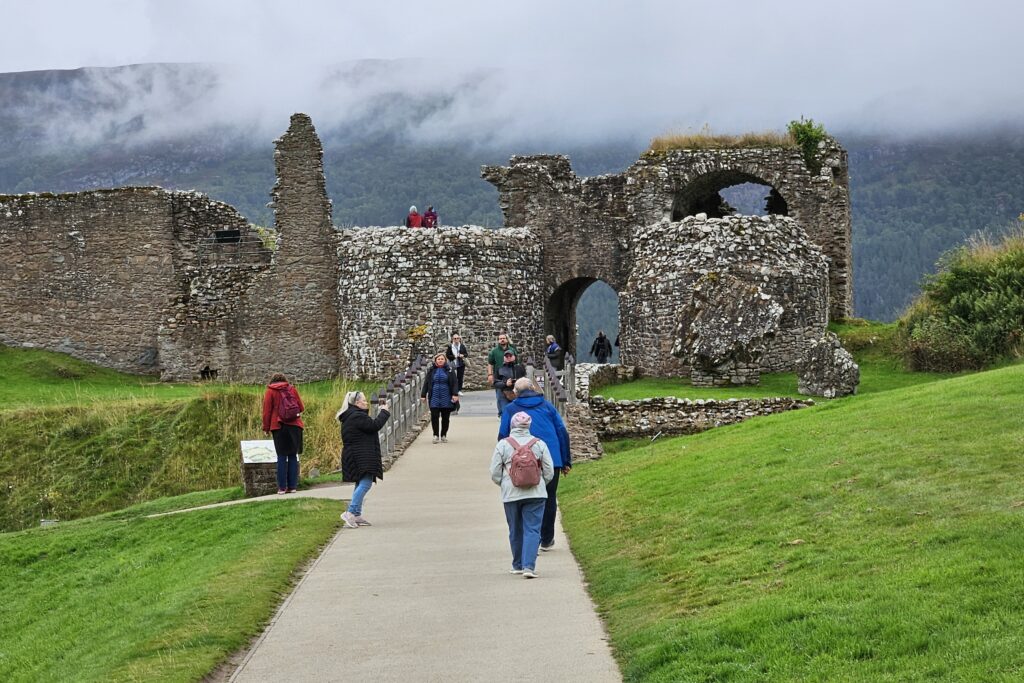
The walled portion of the castle is shaped roughly like a figure-8 along the bank of the loch, forming two enclosures or bailies: the Nether Bailey to the north, and the Upper Bailey to the south. The curtain walls of both enclosures date largely to the 14th century. The northern bailey is where most of the remaining structures are located
I was particularly interested in the old model of a trebuchet on the grounds. The trebuchet is a type of catapult that uses a rotating arm with a sling attached to the tip to launch a projectile. It was a common powerful and common siege engine that was probably used against the castle.
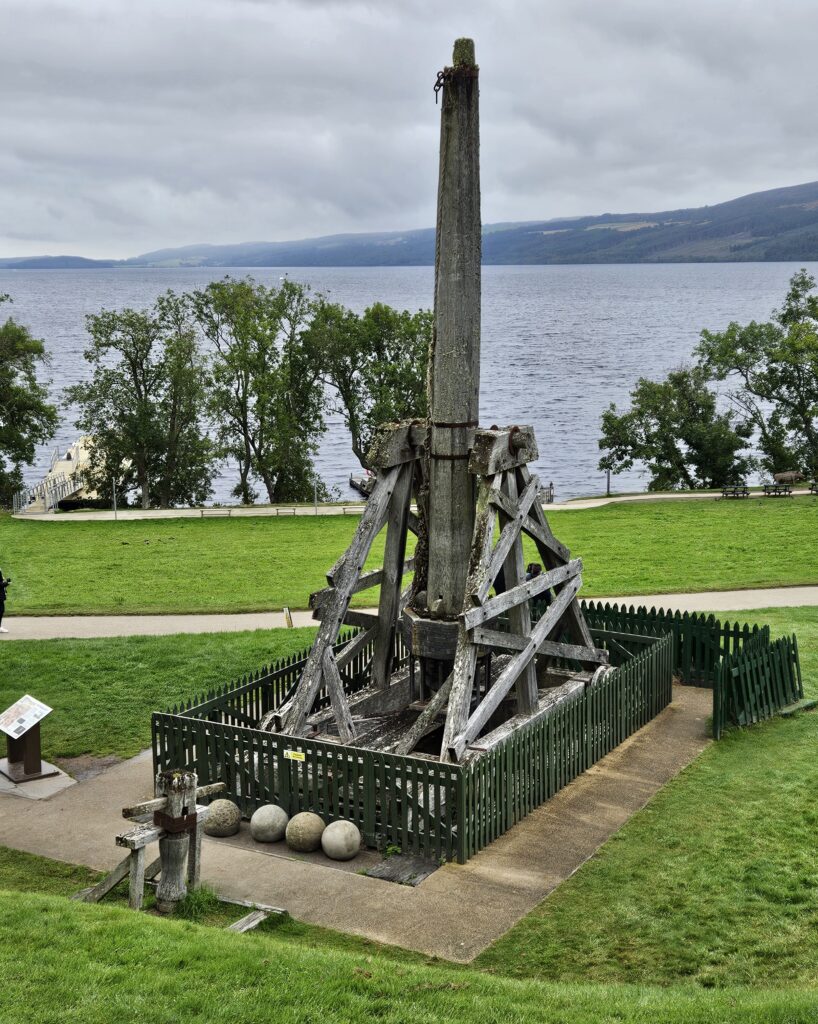
From the shore line of the castle, we took a ferry the length of Loch Ness. Although I spent my time scanning the water for Nessie, the Loch Ness monster, I didn’t get a glimpse of her. The idea is that Nessie is actually a large sea snake and not a modern day plesiosaur. First of all, plesiosaur were not fresh water creatures and second, a lot of snake DNA has been gathered from Loch Ness.
After debarking from the ferry, we got back on the bus for our trip to Culloden Moor. The story of Culloden is well-known: the site of the last battle of the Jacobite uprising in 1746, more than one thousand Highlanders lost their lives in the span of one hour. In retribution for the uprising, King George II had most of the clans slaughtered and their homes destroyed. This marked the end of the clan system in Scotland. Culloden itself is just a large field where the lines of the Highlanders and the English are marked by red and blue flags. It is somber and peaceful. We enjoyed the museum and the demonstration by one of the guides of what each side wore for uniforms, the weapons used, and the type of fighting.
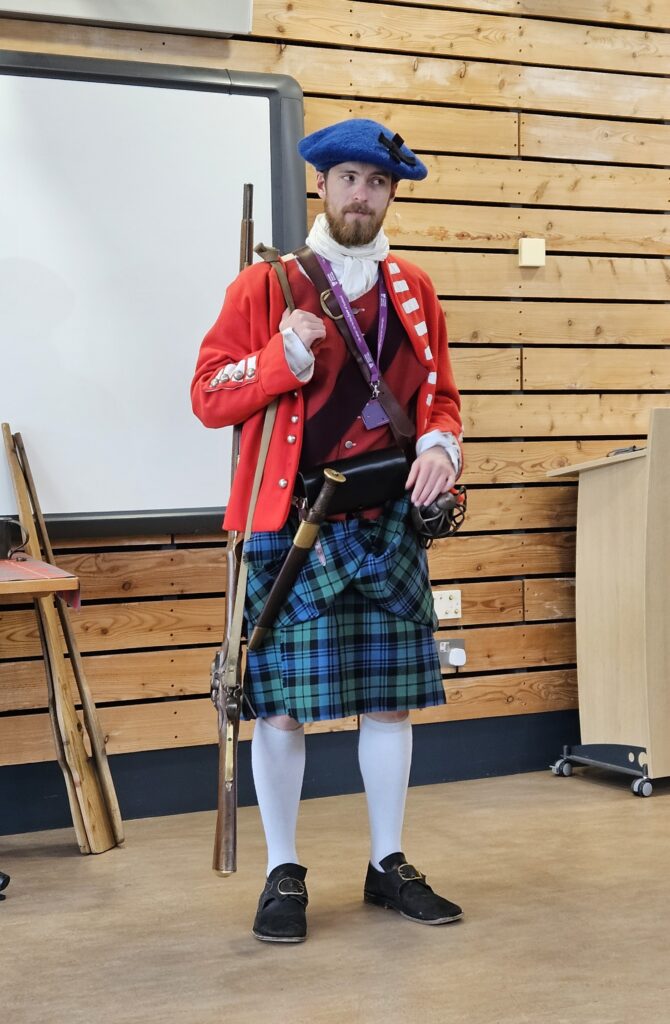
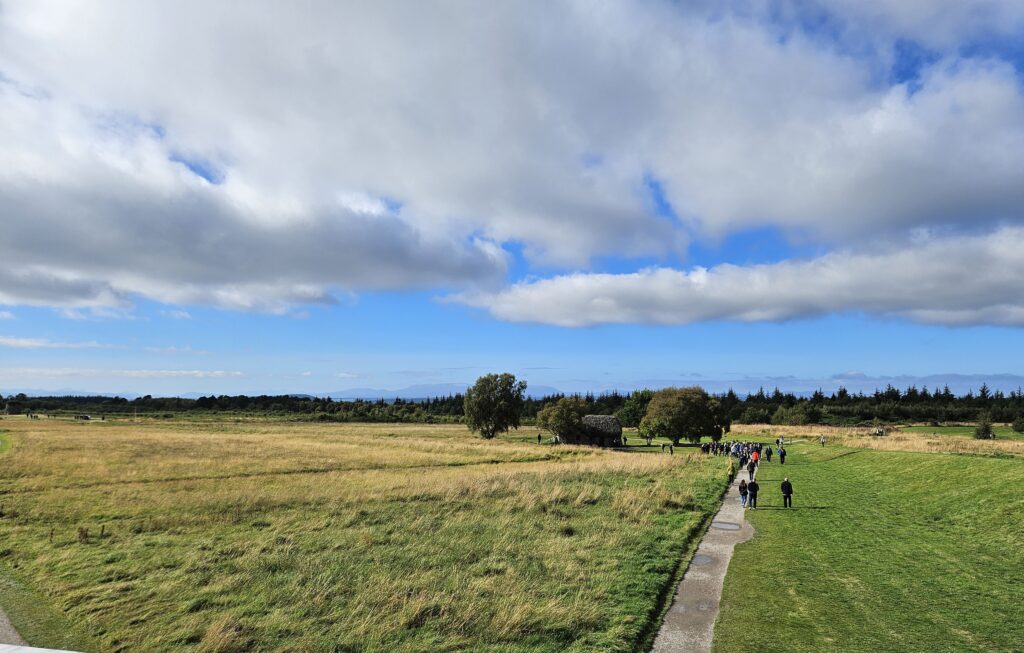
The next day took us to Dunrobin Castle, a breathtaking mid-19th-century edifice that began as a tower keep in the 14th century. The architect of the Houses of Parliament in London did the remodeling, along with gardens designed in the fashion of Versailles. The Castle, which resembles a French château with its towering conical spires sits on the east coast of the Northern Highlands overlooking the Moray Firth.
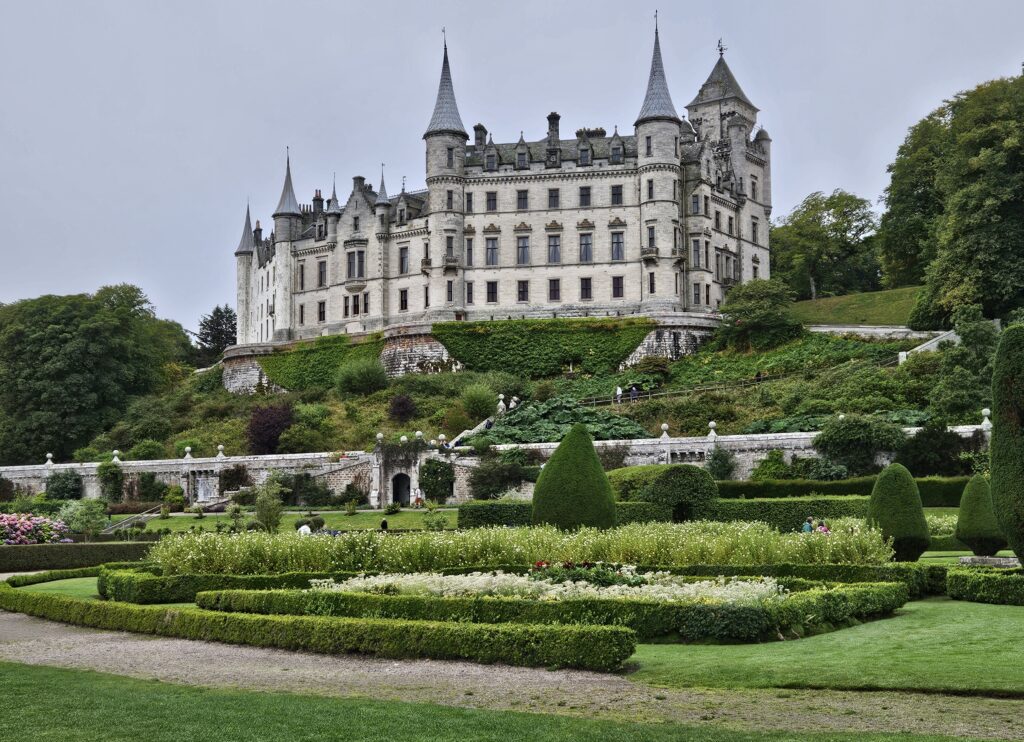
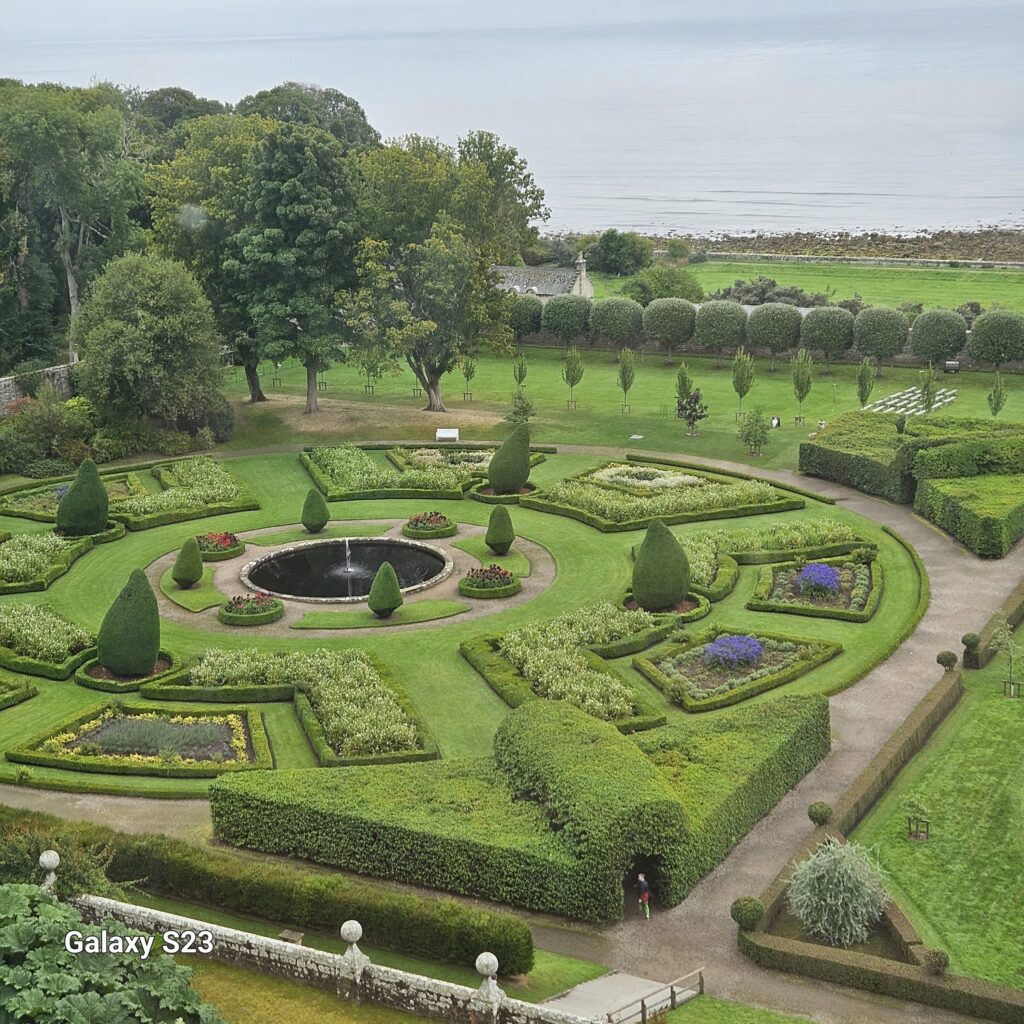
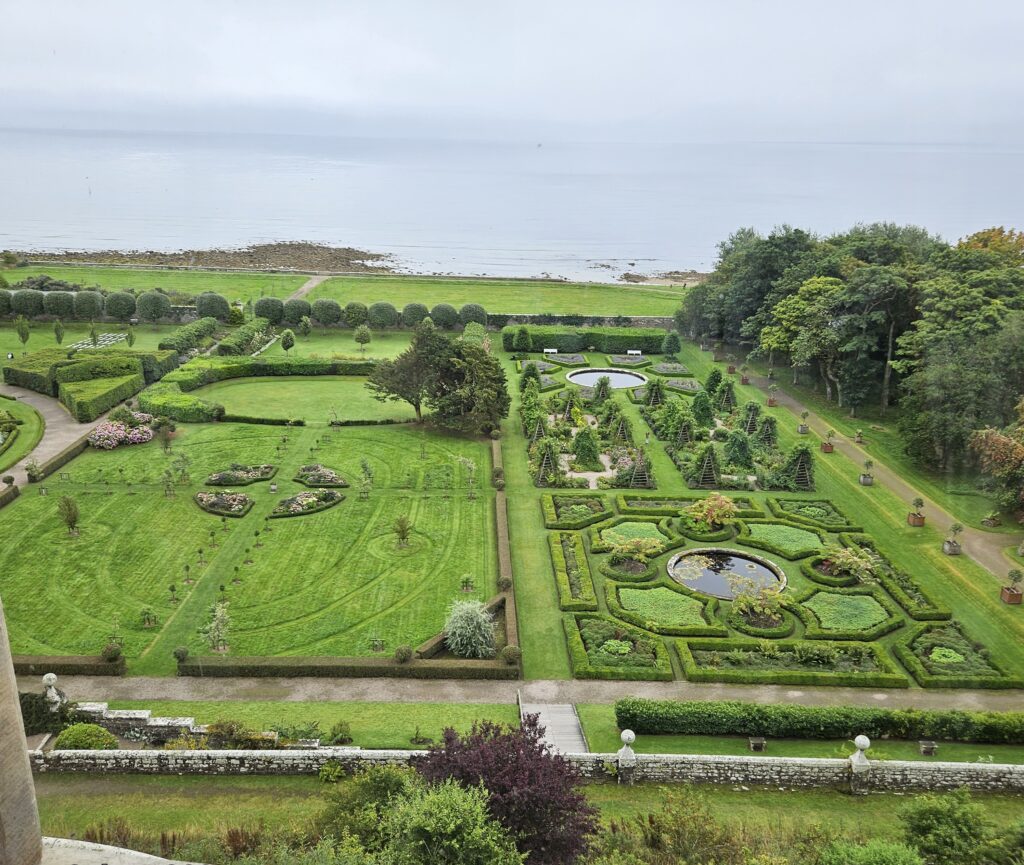
A special treat was a demonstration of falconry by the in-house falconer. Several different types of falcons, an owl and a golden eagle were on display on their perches and he showed us the hunting skills of a Harris hawk and the peregrine falcon and how he works with them when he goes hunting.
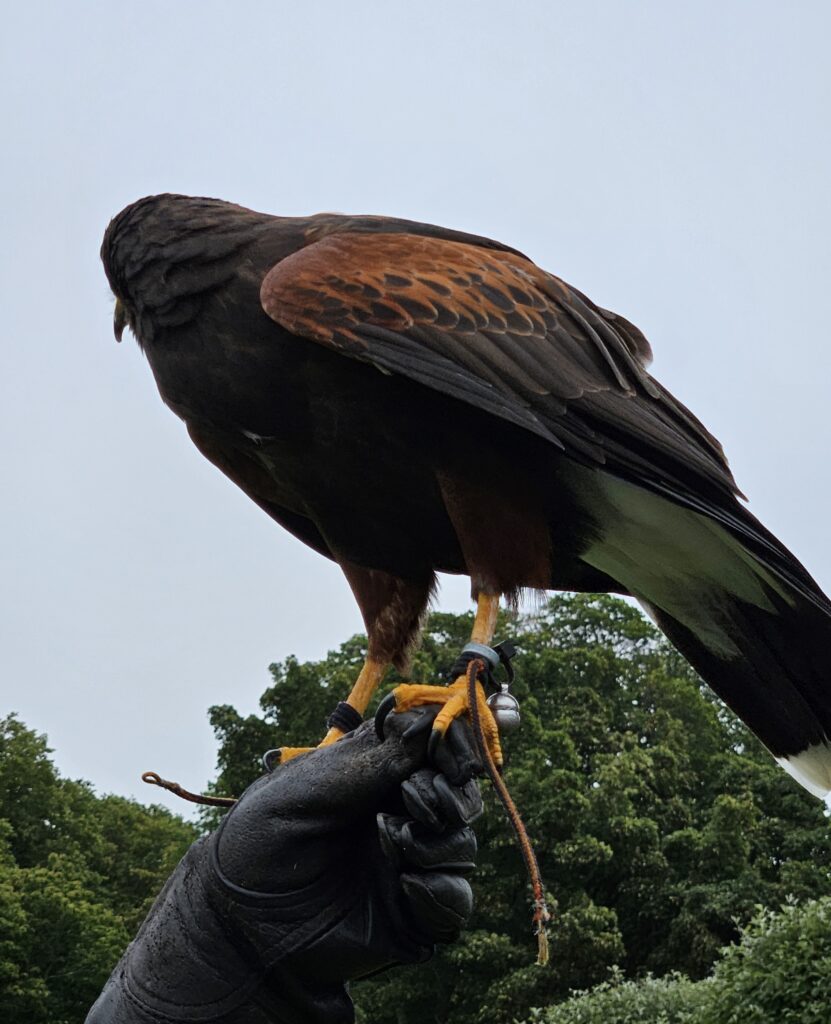
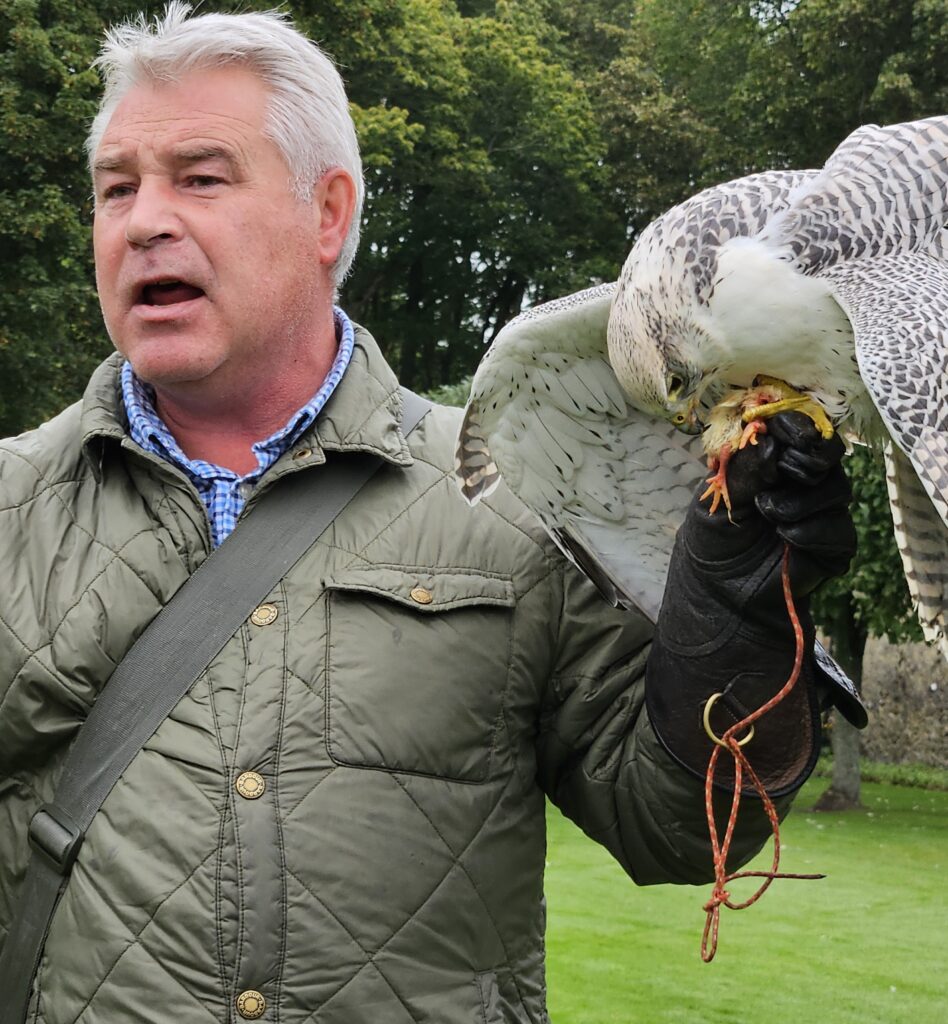
In the afternoon, we made a stop that had Hubs grinning from ear to ear – the Glenmorangie whisky distillery. We listened to the guide describe how the whisky was created and distilled and then had a whisky tasting to round up the tour. The company has half a million barrels of whisky aging on site. One thing we noticed is that all the trees around the distillery were black. This is a result of the distillate that escapes during the process, called the Angel’s Share.
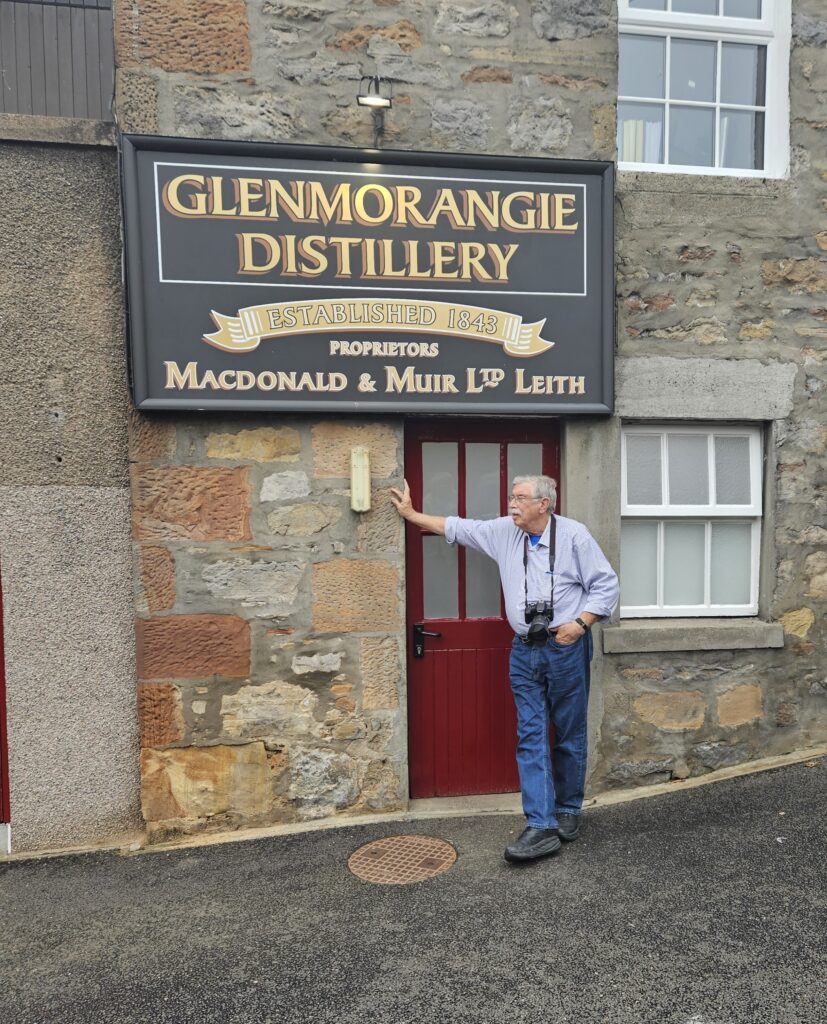
![]()

Lovely looking gardens. I think I would have been searching for Nessie too! I hope you got to see some of the land surrounding the loch to.
We did on our ferry ride. A few ruins and some houses I would love to live in! Scotland is a very watery country. I believe one of the lochs we saw holds more fresh water than all the other lakes and lochs in Great Britain together. They will never suffer from a water shortage!
More wonderful pics, Noelle 🙂 Fun to try to spot Nessie. Bet she was nearby watching you.
And probably having a good laugh!
Lol
Lovely pics. And you’re right about castles. Mind you, Wales is well provided for with castles as well. I remember visiting Talisker distillery in the Isle of Skye, and my father quite enjoyed that particular visit. It wouldn’t be a proper visit to Scotland otherwise. Thanks for sharing those! (And Nessie can be very shy, I hear… But I agree that she was probably watching you all from a distance).
And laughing. Gene and I are not enamored with the whiskys from Islay (the islands) because of the peaty, smoky taste, almost like medicine. But the Highland distilleries, like Glenmorangie, make some wonderful whiskies, which vary in taste depending on what type of barrel they are aged in – sherry, bourbon, etc. They import used barrels from the US.
We used to study the Middle Ages when I taught sixth grade. The culminating event was for the kids to build their own castles out of the materials of their choice. I would also have liked to have seen the trebuchet. I didn’t realize they were that big. I am often impressed by the ingenuity of people, especially considering the time period.
I have a funny story about trebuchets. For my book Death by Pumpkin, I interviewed the President of the Large Pumpkin Growers Association in Maine. He told me that they were going to try to flip a 1000 pound pumpkin with a trebuchet. And they did it – he sent me a video!
I hope you took a wee dram at some of the other distilleries, too. Or maybe that’s why you caught a cold?
I remember standing by Culloden Field, and being assaulted by an overwhelming sense of sadness. That was some time in the 80s when I was visiting our branches in Alness and Elgin… a long time ago!
Looking out over the field, we could feel sadness and longing for days gone by. Such brutality though. As for whiskies, we had two tastings on the tour so we got to sample a broad range of them.
Great Highlands tour, Noelle. Good to see a Trebuchet since you are probably aware on guards my place too.
I am. I hope you have some huge rocks!
Yes big rocks
🙂 🙂
Henof I appreciate you sharing this blog post. Thanks Again. Cool.
You’re welcome1
Beautiful part of the world
Technoob I really like reading through a post that can make men and women think. Also, thank you for allowing me to comment!
dodb buzz This is my first time pay a quick visit at here and i am really happy to read everthing at one place
Insanont I appreciate you sharing this blog post. Thanks Again. Cool.
Touch to Unlock I really like reading through a post that can make men and women think. Also, thank you for allowing me to comment!
Thanks I have just been looking for information about this subject for a long time and yours is the best Ive discovered till now However what in regards to the bottom line Are you certain in regards to the supply
Mangaclash There is definately a lot to find out about this subject. I like all the points you made
Mountsinai I’m often to blogging and i really appreciate your content. The article has actually peaks my interest. I’m going to bookmark your web site and maintain checking for brand spanking new information.
Nice blog here Also your site loads up very fast What host are you using Can I get your affiliate link to your host I wish my site loaded up as quickly as yours lol
Noodlemagazine Good post! We will be linking to this particularly great post on our site. Keep up the great writing
hentairead Nice post. I learn something totally new and challenging on websites
Mitolyn This was beautiful Admin. Thank you for your reflections.